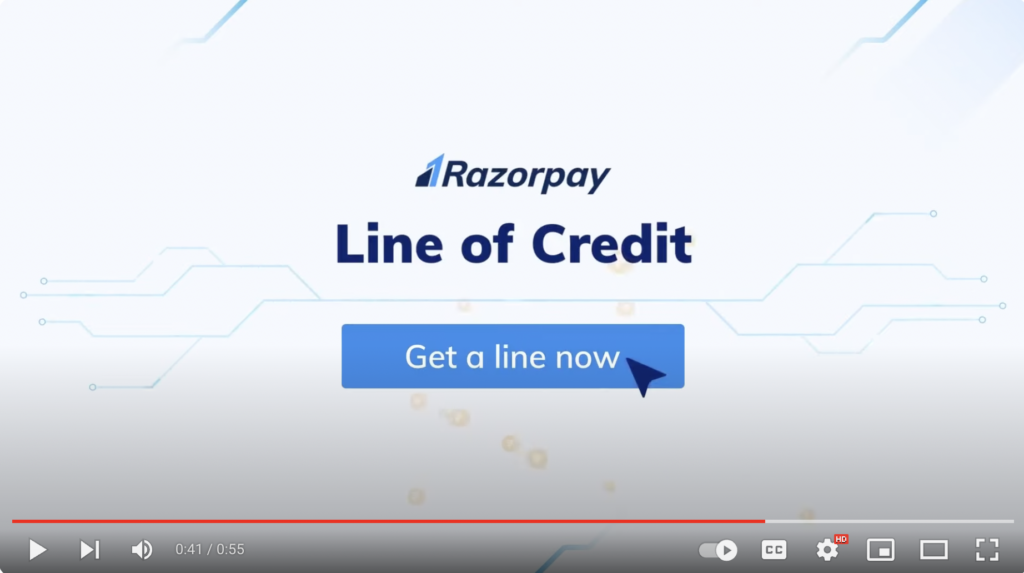The Reserve Bank of India has recently announced the inclusion of pre-sanctioned credit lines in the UPI system to promote the development of unique financial products. It is expected to benefit not only financial institutions but also businesses, especially small business owners, who will now have access to more convenient and transparent lines of credit.
Today, many business owners choose to opt for a line of credit (LOC) or a credit line over traditional corporate loans. With 42.5 million SMEs already running their operations in India in 2023, this trend is most likely to go up in the coming years. Let’s understand how a credit line is different from traditional loans and how it can help small businesses.
What is a credit line?
A credit line is a flexible credit facility that, similar to a credit card, comes with a specific credit limit. It is a revolving loan – the borrower can withdraw, repay, and withdraw again – while staying within the set limit.
Businesses can use the authorised limit in parts, as and when required. Line of credit loans can help small business owners tackle sudden financial requirements – be it for inventory or salary payments. Most importantly, the interest amount is only levied on the utilised amount and not the entire credit limit.
When someone applies for a credit line in India, the financial institution assesses the risk associated before setting the maximum borrowing amount. A line of credit is particularly popular for its flexibility, simplicity, and attractive interest rates.
Understanding different line of credit loans
The most common types of credit lines in India are business, personal and home equity.
- Personal line of credit: Individuals can withdraw funds as and when needed. No collateral required.Also read: Should You Use Personal Line of Credit for Your Small Business?
- Business credit line: Businesses get 24/7 access to a revolving line of credit and only pay interest on the borrowed amount. It works as a business credit card but usually comes with a lower interest rate.
- Home Equity Line of Credit (HELOC): This credit line involves a mortgage. Here, the approved limit depends on the market value of the borrower’s house.
Be it for business expansion, R&D or salary payment, this last-mile credit option offers access to timely and flexible funding.
Is a line of credit a loan?
Both loans and credit lines in India provide the borrower with monetary aid at times of crisis. In terms of the end goal, they are similar. However, they are different when it comes to the working principle.
| Feature | Credit line | Loan |
| Purpose | Ongoing working capital, short-term financing | Specific one-time expenses or investments |
| Repayment | Revolving credit, can be used repeatedly | Fixed monthly payments over a set loan term |
| Interest | Pay interest only on the amount used | Fixed interest rate on the entire loan amount |
| Credit limit | Pre-approved credit limit | Fixed loan amount |
| Flexibility | Use funds as needed | Fixed loan amount |
| Application process | Mostly online with minimal documentation | Typically extensive |
| Collateral requirement | In most cases, lenders don’t require collateral | Often requires collateral |
| Risk assessment and approval | Based on creditworthiness and business financials | Based on creditworthiness and business financials |
| Term | Open-ended, no fixed term | Fixed term |
| Renewal | Renewable after repayment | Typically requires reapplication |
| Usage | Flexible and adaptable to changing needs business purpose | Fixed for a specific business purpose |
It’s important to note that the suitability of a business line of credit vs. a business loan depends on the specific financial needs and circumstances of the business. Businesses may use one or both types of financing depending on their cash flow requirements and goals.
How can Razorpay Line of Credit benefit small businesses?
 Besides offering access to working capital quickly, here are other significant advantages of Razorpay Line of Credit facility:
Besides offering access to working capital quickly, here are other significant advantages of Razorpay Line of Credit facility:
- Attractive interest rates
Line of credit interest rates are lower than most traditional loans and credit cards, starting from just 1.5% per month. - No pre-closure charges
You can repay before the due date without incurring any penalty. You only pay interest on the amount they utilise. - Easy and transparent:
Instant withdrawal and repayment of line of credit online, supported through a simplified app interface. You can apply from the comforts of your home with a 3-step application process. - Collateral free:
You can get access to up to Rs. 25 lakh credit line, sanctioned within 24 hours. No collateral required.
Frequently asked questions:
Q1: What are typical line of credit interest rates for small businesses?
A1: Line of credit interest rates for small businesses can vary based on factors such as creditworthiness, the lender, and the current market conditions. They may range from a variable rate based on a benchmark (e.g., prime rate) plus a margin to fixed rates. It’s essential to compare rates from different lenders to find the most competitive option.
Q2: How can I apply for a line of credit online for my small business?
A2: Applying for a line of credit online is a convenient option for small businesses. You can typically visit the lender’s website, fill out an application form, provide the necessary documents, and await approval. Online applications often streamline the process and may offer quicker responses.
Q3: What is a line of credit in banking and how does it work for small businesses?
A3: A line of credit in banking is a pre-approved amount of funds that a small business can borrow from a financial institution. It works as a revolving credit account, allowing businesses to withdraw funds as needed up to their credit limit. Interest is only charged on the amount borrowed, making it a flexible financing option.
Q4: What is a line of credit loan, and how is it different from a traditional business loan for small businesses?
A4: A line of credit loan is a type of financing where a lender provides a predetermined credit limit that a small business can access as needed. It’s different from a traditional business loan, which provides a lump sum upfront. With a line of credit loan, businesses can draw funds as required and only pay interest on the amount used.
Q5: What is the primary meaning of lines of credit for small businesses?
A5: Lines of credit for small businesses refer to a financial arrangement where a lender offers a specific credit limit that the business can tap into when needed. It’s a flexible financing tool that helps businesses manage working capital, cover short-term expenses, and navigate fluctuations in cash flow effectively.





